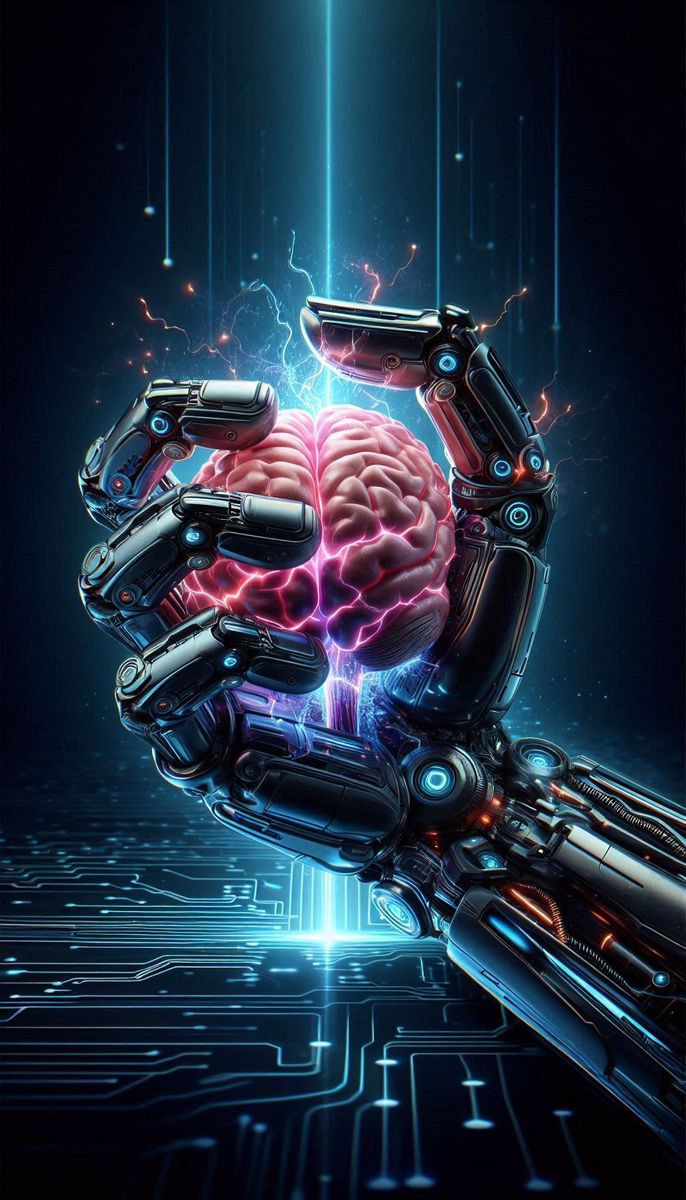
In 2024, global private investment in artificial intelligence surged to $109.1 billion—nearly 12 times China’s $9.3 billion and 24 times the U.K.’s $4.5 billion—underscoring an unprecedented arms race among tech powers. Venture capital also played a major role, with Artificial Intelligence startups capturing roughly one‑third of all global VC funding (over $100 billion) and growing by more than 80% year‑over‑year citeturn0news11.
From conversational agents to industry‑specific engines, these investments are fueling a diverse ecosystem of Artificial intelligence “titans” that are shaping how businesses, governments, and consumers interact with intelligent systems.
1. Anthropic’s Claude: The Ethical Artificial Intelligence
Overview:
Claude (2023) was designed from the ground up with safety and value alignment in mind.
Strengths:
- Safety‑First: Rigorous guardrails to minimise harmful outputs.
- Customizable: Developers can fine‑tune behaviour to domain‑specific needs.
- Transparency: Clear documentation of training and decision‑making processes.
Weaknesses:
- Limited Availability: Still in private beta for many enterprise customers.
- Conservative Tone: Safety constraints can make outputs less creative.
- Niche Appeal: Attracts organisations prioritising ethics over raw capability.
Why It Stands Out:
Claude’s emphasis on responsible Artificial Intelligence positions it as the go‑to choice for risk‑averse sectors like healthcare and finance.
2. Alibaba’s Tongyi Qianwen: The E‑Commerce Giant’s Artificial Intelligence
Overview:
Tongyi Qianwen (2023) powers customer support, product recommendations, and internal analytics across Alibaba’s e‑commerce ecosystem.
Strengths:
- E‑Commerce Optimisation: Personalised shopping and logistics automation.
- Enterprise‑Grade: Built on Alibaba Cloud’s scalable infrastructure.
- Business Analytics: Helps merchants analyse trends and forecast demand.
Weaknesses:
- Niche Focus: Geared toward e‑commerce rather than general‑purpose chat.
- Regulatory Limits: Must comply with Chinese data‑security laws.
- Competition: Faces rivals like Tencent’s Artificial Intelligence and Baidu’s Ernie.
Why It Stands Out:
By embedding Artificial Intelligence at every step of online retail, Alibaba is redefining how merchants and consumers interact.
3. Baidu’s Ernie Bot: The Chinese Answer to ChatGPT
Overview:
Ernie Bot (2023) integrates with Baidu Search, Maps, and apps to deliver conversational Artificial intelligence tuned for Chinese users.
Strengths:
- Ecosystem Synergy: Seamless in Baidu’s suite of consumer and enterprise services.
- Multilingual: Primarily Chinese, but supports English and other languages.
- Real‑Time Updates: Leverages Baidu’s search index for current information.
Weaknesses:
- Regulatory Constraints: Operates under China’s content and data rules.
- Limited Global Reach: Primarily targeted at the domestic market.
- Content Filtering: Government compliance can restrict certain topics.
Why It Stands Out:
Ernie Bot showcases how China’s Artificial Intelligence leaders are building homegrown alternatives to Western models, tightly integrated with local platforms.
4. OpenAI’s ChatGPT: The Conversational Powerhouse
Overview:
ChatGPT, launched in November 2022 by OpenAI, is built on the GPT-4 architecture and excels at human‑like dialogue and text generation.
Strengths:
- Versatility: Handles casual chat, coding help, and complex technical writing.
- Scale: Processes over 1 billion queries per day citeturn0search3.
- Accessibility: User‑friendly web interface and APIs for developers.
Weaknesses:
- Knowledge Cutoff: Training data ends in October 2023, so it can’t reference later events.
- Hallucinations: Occasional plausible‑but‑incorrect answers.
- Ethical Concerns: Risks around misinformation and data privacy.
Why It Stands Out:
With 400 million weekly active users as of March 2025, ChatGPT has become the de facto standard for conversational Artificial Intelligence citeturn0search6.
5. Microsoft’s Copilot: The Artificial Intelligence Assistant for Productivity
Overview:
Copilot (2023) embeds GPT-4 into Microsoft 365—Word, Excel, PowerPoint, and Teams—to automate drafting, data analysis, and slide creation.
Strengths:
- Workflow Integration: Native in tools used by over 345 million paid Microsoft 365 subscribers citeturn0news21.
- Enterprise Security: Built to meet corporate compliance standards.
- Context‑Aware: Leverages your documents and data for personalised suggestions.
Weaknesses:
- Subscription Required: Only available to Microsoft 365 customers.
- Learning Curve: Advanced features can take time to master.
- Microsoft‑Only: Limited usefulness outside the 365 ecosystem.
Why It Stands Out:
By turning everyday office apps into Artificial Intelligence‑powered assistants, Copilot has the potential to boost productivity across millions of enterprises.
6. DeepSeek: The Artificial Intelligence for Precision and Efficiency
Overview:
DeepSeek (2023) delivers hyper‑accurate models for finance (risk assessment), healthcare (diagnostics), and logistics (route optimisation).
Strengths:
- Industry Tailoring: Custom solutions for high‑stakes tasks.
- Accuracy: Minimises error margins in critical applications.
- Resource Efficiency: Optimised for low‑latency inference.
Weaknesses:
- Complex Deployment: Requires domain expertise to integrate.
- Limited Publicity: Known mostly within specialised sectors.
- Narrow Scope: Not intended for general‑purpose NLP.
Why It Stands Out:
DeepSeek exemplifies the trend toward domain‑specific Artificial Intelligence, where precision is paramount.
7. xAI’s Grok: The “Truth‑Seeking” Challenger
Overview:
Grok is a generative Artificial intelligence chatbot developed by Elon Musk’s xAI, first released November 3, 2023, with its latest Grok‑3 update (Feb 17, 2025) offering advanced reasoning modes and multimodal capabilities citeturn0search0turn0search2.
Strengths:
- Unfiltered, Real‑Time Answers: Direct integration with X’s firehose provides up‑to‑the‑minute information.
- Advanced Reasoning: “Think” and “Big Brain” modes for complex problem solving.
- Multimodal Processing: Interprets and generates text, code, and images.
Weaknesses:
- Safety & Content Issues: “Unfiltered” ethos has led to NSFW outputs and harmful language, prompting additional moderation efforts citeturn0news10.
- Regulatory & Ethical Concerns: Its provocative tone raises child‑safety and misinformation risks citeturn0news17.
- Controversial Branding: Musk’s framing against “woke” Artificial Intelligence may polarise users.
Why It Stands Out:
Grok’s real‑time, unfiltered approach—backed by Musk’s “truth‑seeking” vision—marks a bold contrast to more constrained models, driving both engagement and debate.
8. Tencent’s Hunyuan: The Social Media Giant’s Artificial Intelligence
Overview:
Hunyuan (2024) is Tencent’s multimodal model for WeChat, QQ, and its content platforms.
Strengths:
- Social Integration: Powers chatbots, content recommendations, and user‑generated content tools.
- Multimedia Generation: Can produce text, images, and short videos.
- Engagement‑Driven: Designed to boost time‑on‑platform metrics.
Weaknesses:
- Platform Lock‑In: Only available within Tencent’s services.
- Regulatory Oversight: Subject to Chinese internet regulations.
- Internal Competition: Overlaps with offerings from Baidu and Alibaba.
Why It Stands Out:
Hunyuan illustrates how social‑media ecosystems are using Artificial Intelligence to deepen user engagement and drive content creation.
9. Kimi AI: The Rising Star in Conversational Artificial Intelligence
Overview:
Kimi AI (2024) from Moonshot Artificial Intelligence combines advanced NLP with multimodal inputs to rival ChatGPT and Bard.
Strengths:
- State‑of‑the‑Art NLP: Handles complex dialogue flows with high coherence.
- Image + Text: Supports multimodal queries for richer interactions.
- Rapid Iteration: Startup agility driving frequent feature updates.
Weaknesses:
- Young Product: Short track record compared to incumbents.
- Regulatory Hurdles: Must navigate China’s evolving Artificial Intelligence regulations.
- Market Penetration: Still building global brand recognition.
Why It Stands Out:
Kimi AI’s speed of innovation and multimodal prowess make it a contender to watch in the conversational‑Artificial Intelligence “wars.”
10. Meta’s LLaMA: The Open‑Source Challenger
Overview:
Released in early 2023, LLaMA democratizes access to large‑scale language models by providing weights and code to researchers.
Strengths:
- Open‑Source: Free to use, modify, and redistribute.
- Customizability: Researchers can fine‑tune for specialised tasks.
- Transparency: Full visibility into architecture and training data.
Weaknesses:
- Technical Barrier: Requires significant computing power to run effectively.
- No User Interface: Aimed squarely at developers, not end users.
- Lower Public Profile: Lacks brand recognition outside Artificial Intelligence research circles.
Why It Stands Out:
By sharing its state‑of‑the‑art model, Meta has accelerated innovation and fostered collaboration across the Artificial Intelligence community.
11. SenseTime’s SenseChat: The Artificial Intelligence for Visual Intelligence
Overview:
SenseChat (2023) blends NLP with computer vision, enabling text+image understanding for industries like healthcare and retail.
Strengths:
- Visual Understanding: Can describe, analyse, and generate content from images.
- Industry Focus: Deployed in security, retail analytics, and medical imaging.
- Research‑Driven: Built on SenseTime’s leading computer‑vision research.
Weaknesses:
- Specialised Use‑Case: Less relevant for pure text applications.
- Compute‑Heavy: Requires GPUs for inference at scale.
- Limited Public API: Primarily sold as an enterprise solution.
Why It Stands Out:
SenseChat is a pioneer in multimodal Artificial Intelligence, showing how vision + language unlocks new industrial applications.
12. iFlyTek’s SparkDesk: The Artificial Intelligence for Education and Beyond
Overview:
SparkDesk (2022) is iFlyTek’s speech‑centric model for language learning, automated grading, and customer service.
Strengths:
- Speech Recognition: Industry‑leading accuracy in Mandarin and other languages.
- Education Tools: Automated tutoring, essay scoring, and pronunciation feedback.
- Cross‑Industry: Also used in call centres and healthcare transcription.
Weaknesses:
- Niche Appeal: Best suited for speech and education, not general chat.
- Regulatory Compliance: Must align with Chinese data policies.
- Global Awareness: Little presence outside China.
Why It Stands Out:
SparkDesk demonstrates the power of Artificial Intelligence‑driven voice interfaces, particularly in educational settings.
# Artificial Intelligence Wars: A Comprehensive Analysis of the Global Artificial Intelligence Titans
In 2025, the artificial intelligence landscape is more dynamic than ever, with tech giants and emerging players vying for supremacy. This article delves into the most notable Artificial Intelligence models and platforms, organised alphabetically, providing insights into their unique features, strengths, and applications.
A–C
Adobe’s Agent Artificial Intelligence
Adobe’s Agentic Artificial Intelligence enhances content creation within its software suite, offering advanced features that streamline design and editing processes.
Alibaba’s Qwen (Tongyi Qianwen)
Developed by Alibaba Cloud, the Qwen family includes models like Qwen 2.5-Max and Qwen-VL2, contributing significantly to China’s Artificial Intelligence advancements.
Amazon’s Nova Series
Amazon’s Nova series focuses on specialised applications and enterprise solutions, integrating seamlessly with AWS services to provide scalable Artificial Intelligence capabilities.
Anthropic’s Claude
Anthropic’s Claude series, including Claude 3.7 Sonnet, emphasises safety and ethical considerations, offering models optimised for speed, balance, and complex reasoning.
Apple’s AI Models
Apple’s Artificial Intelligence models are optimised for iOS, demonstrating superior performance in app crash fixes compared to Android, likely due to the latter’s fragmented ecosystem.
D–G
ByteDance’s Doubao
ByteDance’s Doubao model contributes to China’s rapid Artificial Intelligence development, focusing on natural language processing and content generation.
DeepSeek’s R1 and V3
DeepSeek’s R1 and V3 models are known for their efficiency and performance, with DeepSeek-V3 outperforming models like LLaMA 3.1 and Qwen 2.5 in various benchmarks.
Google’s Gemini
Google’s Gemini series, including Gemini Ultra, Pro, Flash, and Nano, offers multimodal capabilities, processing text, images, and audio. Gemini Ultra has outperformed GPT-4 and Claude 2 in various benchmarks.
H–M
LG AI’s EXAONE 3.0
LG AI’s EXAONE 3.0 excels in multilingual understanding, supporting various languages and dialects for global applications.
Meta’s LLaMA (Large Language Model Meta AI)
Meta’s LLaMA series, including LLaMA 3.3, promotes transparency and research collaboration through its open-source models, facilitating advancements in Artificial Intelligence research.
Microsoft’s Copilot
Integrated into Microsoft 365 applications, Copilot enhances productivity by automating tasks and providing intelligent suggestions across Word, Excel, and other tools.
Mistral AI’s Models
Mistral AI, a French startup, specialises in open-weight large language models like Mistral 7B and Mixtral 8×7 B, offering efficient and accessible Artificial Intelligence solutions.
N–Z
Moonshot AI’s Kimi
Moonshot AI’s Kimi is a conversational model with multimodal capabilities, designed to handle complex interactions and provide detailed responses.
Nvidia’s Nemotron Series
Nvidia’s Nemotron series focuses on specialised applications and enterprise solutions, leveraging Nvidia’s hardware to deliver high-performance Artificial Intelligence models.
OpenAI’s ChatGPT and GPT-4.1
OpenAI’s ChatGPT, based on the GPT-4 architecture, is widely used for its versatility in generating human-like text. The upcoming GPT-4.1 model introduces multimodal capabilities and real-time processing.
Tencent’s Hunyuan
Tencent’s Hunyuan model is integrated into platforms like WeChat, focusing on social media applications and enhancing user interactions through Artificial Intelligence.
xAI’s Grok
Developed by Elon Musk’s xAI, Grok is a generative Artificial Intelligence chatbot offering real-time, unfiltered responses and multimodal processing, excelling in STEM-related tasks.
iFlyTek’s SparkDesk
iFlyTek’s SparkDesk is a speech-centric Artificial Intelligence model used in education and customer service, providing tools like automated tutoring and transcription.
Comparative Snapshot
Here’s a comparative overview of the discussed Artificial Intelligence models:
| Model | Key Strengths | Unique Features | Applications |
| Agentic AI | Content creation | Integration with the Adobe suite | Design, editing |
| Qwen 2.5-Max | Language processing | Chinese language focus | Enterprise solutions |
| Nova Series | Scalability | AWS integration | Cloud services |
| Claude 3.7 Sonnet | Ethical Artificial Intelligence | Constitutional AI framework | Customer service, moderation |
| iOS AI Models | Platform optimization | Superior crash fix performance | Mobile applications |
| Doubao | NLP capabilities | ByteDance’s AI advancement | Content generation |
| DeepSeek-V3 | Efficiency | Outperforms LLaMA 3.1, Qwen 2.5 | Research, development |
| Gemini Ultra | Multimodal processing | Outperforms GPT-4, Claude 2 | Data analysis, coding |
| EXAONE 3.0 | Multilingual understanding | Supports various dialects | Global applications |
| LLaMA 3.3 | Open-source | Research collaboration | Artificial Intelligence research |
| Copilot | Productivity | Integration with Microsoft 365 | Office automation |
| Mistral 7B | Accessibility | Open-weight models | Artificial Intelligence solutions |
| Kimi | Conversational Artificial Intelligence | Multimodal capabilities | Customer interaction |
| Nemotron Series | High performance | Nvidia hardware integration | Enterprise solutions |
| ChatGPT | Versatility | Human-like text generation |
Conclusion & What’s Next
The Artificial Intelligence landscape is no longer a single‑player arena but a diverse ecosystem of specialised models. As investment tops $109.1 billion globally, the winners will be those who:
- Integrate deeply into user workflows (Copilot, Bard).
- Balance Capability & Responsibility (Claude, LLaMA).
- Leverage Local Ecosystems to meet regional needs (Ernie Bot, Tongyi Qianwen).
Forward‑Looking Questions:
- Will open‑source models like LLaMA democratize AI or fragment standards?
- How will regulations evolve to govern cross‑border Artificial Intelligence services?
- Can multimodal giants (SenseChat, Kimi AI) redefine user expectations for Artificial Intelligence interactions?
Your Turn: Which of these AI “Titans” do you find most compelling—and why? Share your thoughts below!
Contact Cloud Technology Hub for a strategy consultation, or read more blogs here!








